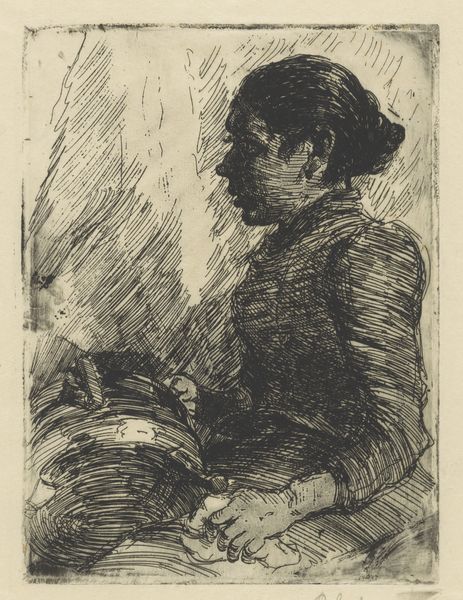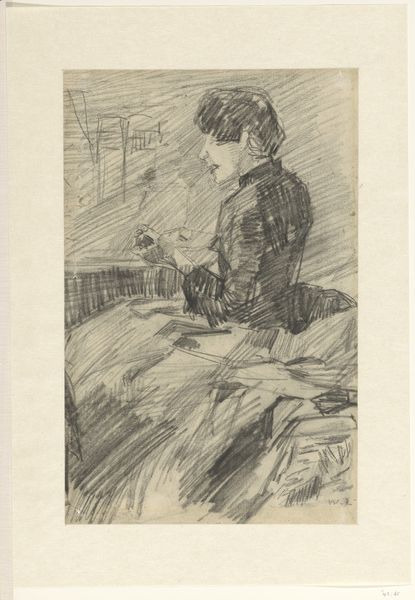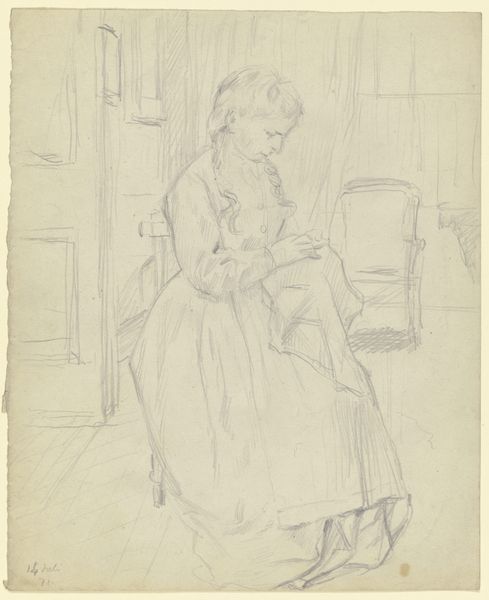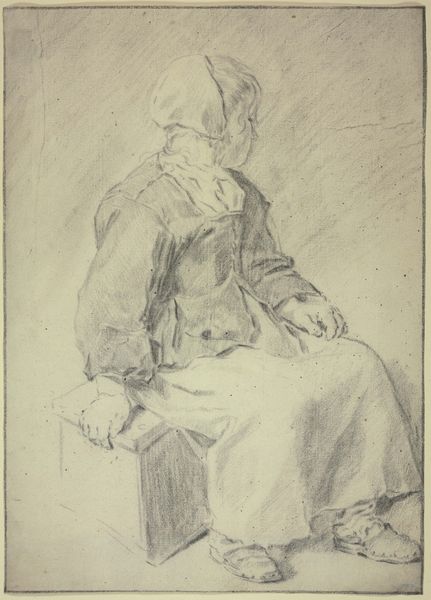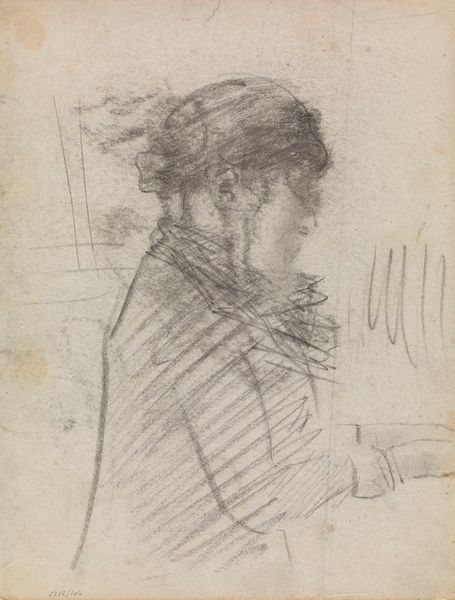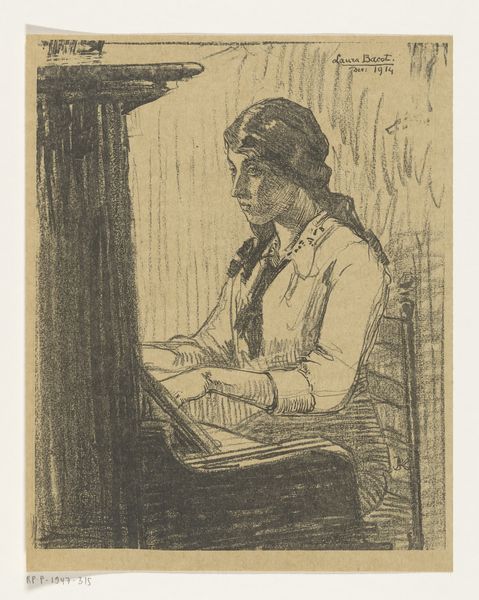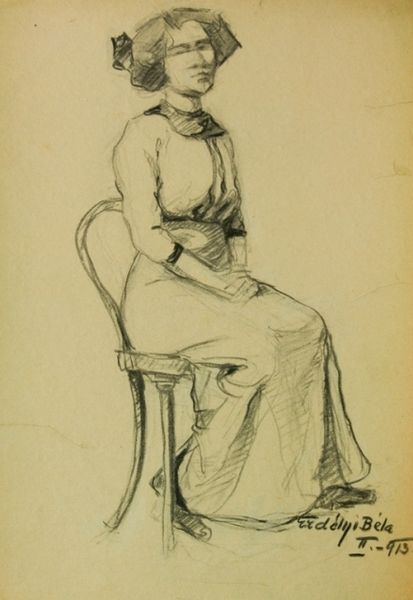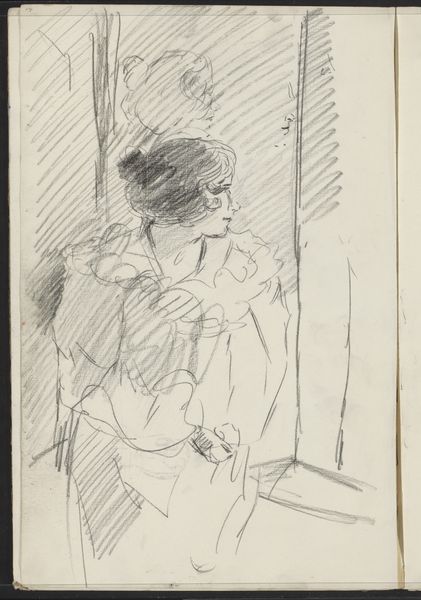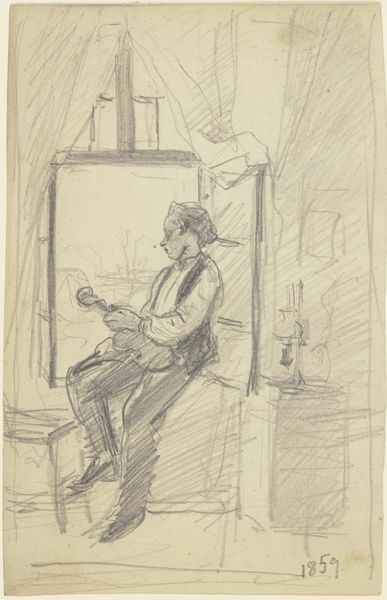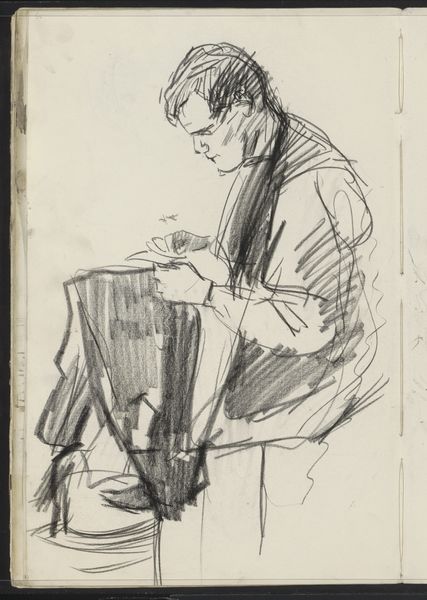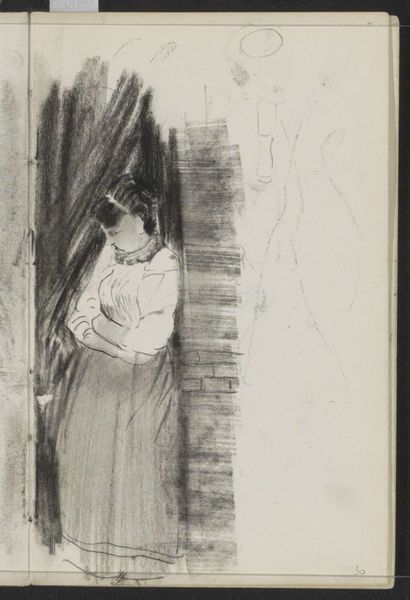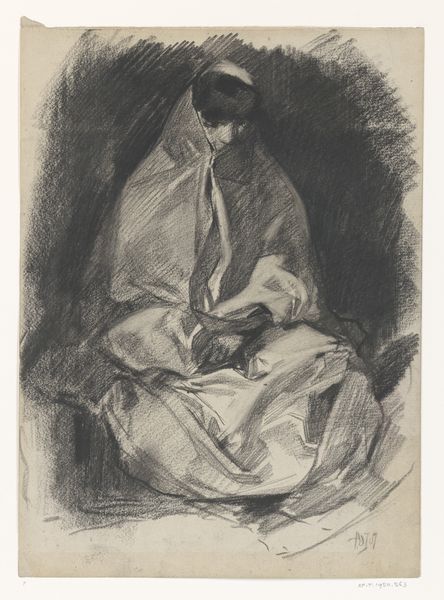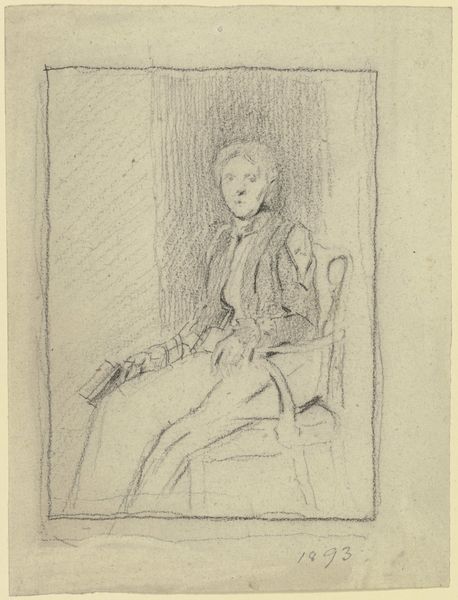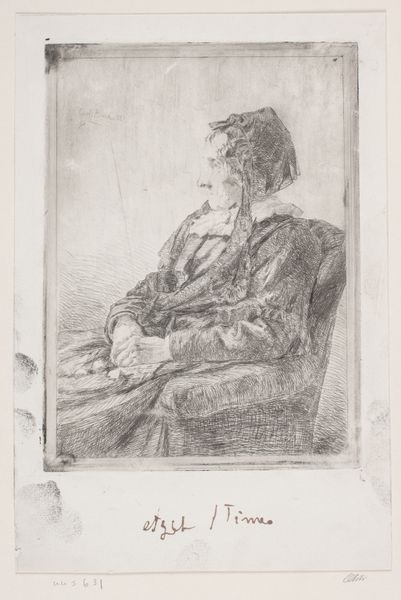
Copyright: Rijks Museum: Open Domain
Curator: Let's turn our attention to Isaac Israels' "Zittende vrouw, mogelijk in een interieur," created sometime between 1875 and 1934. It's currently held here at the Rijksmuseum. Editor: The first thing I notice is the heavy use of chiaroscuro; the contrast of light and dark is stark, especially around the subject's face and shoulders, lending a pensive air to the figure. It feels almost like a stage set, isolating the woman in her thoughts. Curator: Absolutely. And understanding the context of its creation, it is more than just form. Considering Israels was a product of the Hague School, deeply engaged with representing everyday life, particularly the lives of women, how does this informal portrait speak to the experiences of women in the late 19th and early 20th centuries? There's an undeniable introspection there. Is it reflective of broader societal changes? Editor: The formal elements enhance that feeling. Look at the loose, sketchy lines. It feels spontaneous, capturing a fleeting moment. It is definitely unfinished, right? The composition feels very dynamic as a result. The quick, almost frantic marks convey that restless inner life, perhaps even an uneasiness, that the chiaroscuro introduced initially. Curator: And that very "unfinished" quality challenges conventional portraiture of the time, shifting away from idealized depictions towards a more raw, intimate portrayal, which reflects a period of change in women's societal roles, and Israels documented the New Woman frequently in his art. This, perhaps, is a precursor to that type? Editor: Perhaps. The lack of detail almost abstracts the figure. You read more feeling, mood than solid identity. The visible, rough texture and raw execution override other details. For me, the sketch acts as an examination of how little detail it takes to convey an emotional experience to the viewer. Curator: Indeed. It is a delicate balance of representation and abstraction, inviting us to contemplate the untold stories and inner worlds of women of that era. Thank you for expanding my ideas! Editor: My pleasure. This close look, if nothing else, makes me more deeply appreciate Israels' skillful handling of form and its remarkable ability to evoke powerful emotions.
Comments
No comments
Be the first to comment and join the conversation on the ultimate creative platform.
